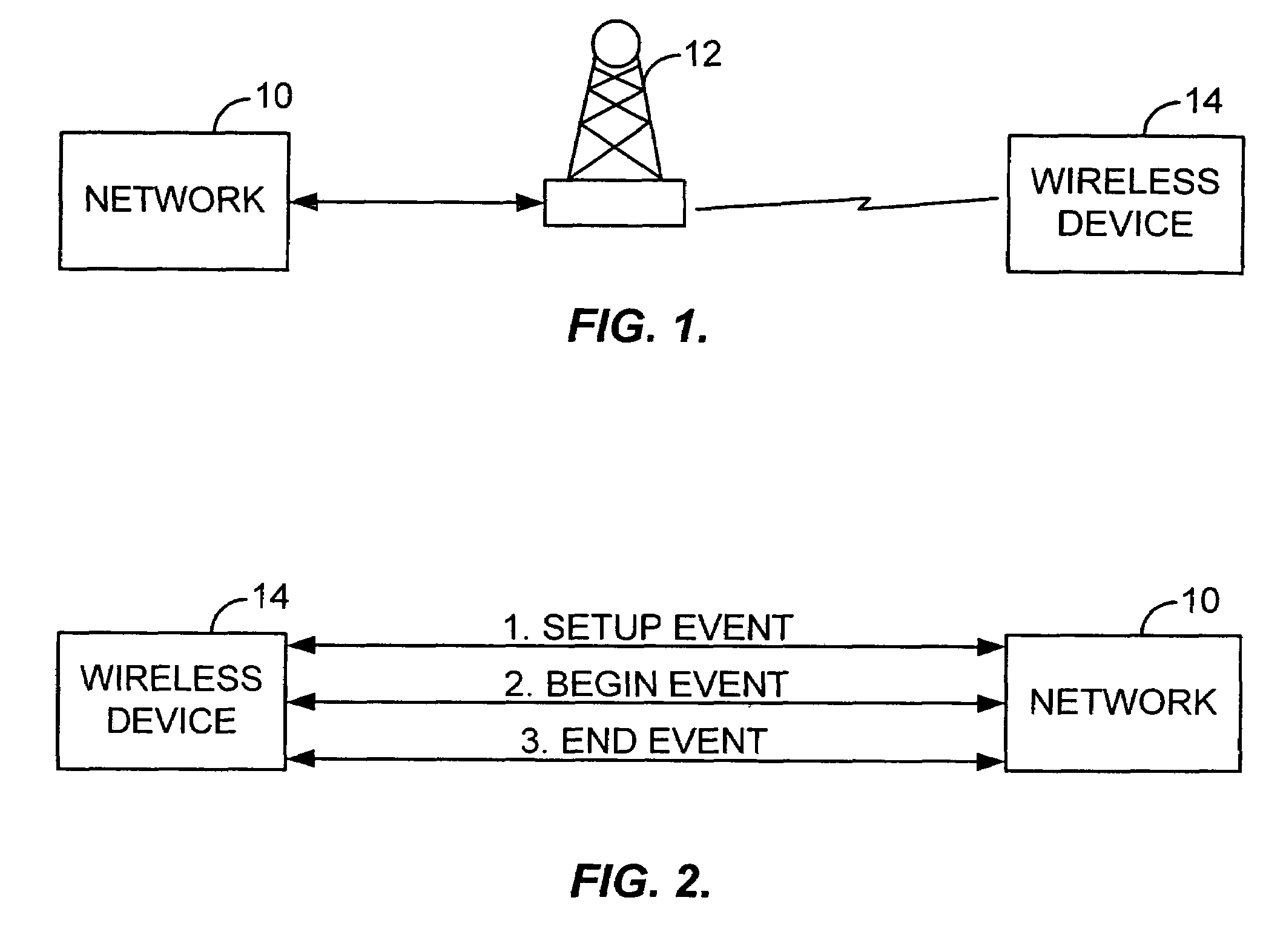Method and system for data rating for wireless devices
a wireless device and wireless technology, applied in data switching networks, data switching details, digital transmission, etc., can solve the problems of avoiding complications and capacity burden, unable to meet the current business practices of some data carriers, and unable to monitor and keep track of data packets accurately for billing purposes at the network level, etc., to avoid the effect of complexity and capacity burden
- Summary
- Abstract
- Description
- Claims
- Application Information
AI Technical Summary
Benefits of technology
Problems solved by technology
Method used
Image
Examples
Embodiment Construction
[0016]FIG. 1 is a simplified schematic diagram illustrating a typical wireless communication arrangement. A network 10 having a number of applications (not shown) connected thereto communicates with a wireless device 14, such as a cellular phone, via a transmission station 12. More specifically, data from the applications is passed to the network 10 that, in turn, relays it to the transmission station 12 for transmission to the wireless device 14. Data may be transmitted between the network 10 and the wireless device 14 using data packets. That is, data to be transmitted is broken down into data packets and each data packet is then individually transmitted by the network 10 to the wireless device 14 and reassembled in the wireless device 14. The transmission station 12 uses over-the-air communications to communicate with the wireless device 14. Over-the-air communication protocols that can be used to implement wireless communications between the wireless device 14 and the network 10...
PUM
 Login to View More
Login to View More Abstract
Description
Claims
Application Information
 Login to View More
Login to View More - R&D
- Intellectual Property
- Life Sciences
- Materials
- Tech Scout
- Unparalleled Data Quality
- Higher Quality Content
- 60% Fewer Hallucinations
Browse by: Latest US Patents, China's latest patents, Technical Efficacy Thesaurus, Application Domain, Technology Topic, Popular Technical Reports.
© 2025 PatSnap. All rights reserved.Legal|Privacy policy|Modern Slavery Act Transparency Statement|Sitemap|About US| Contact US: help@patsnap.com


